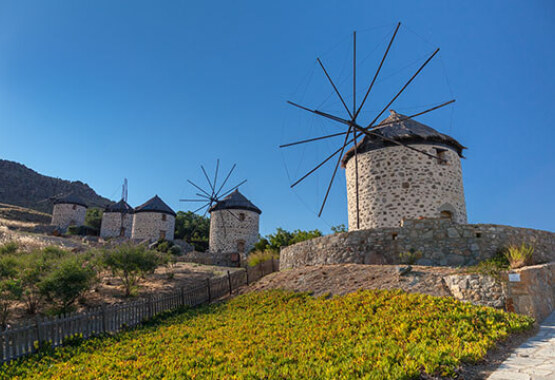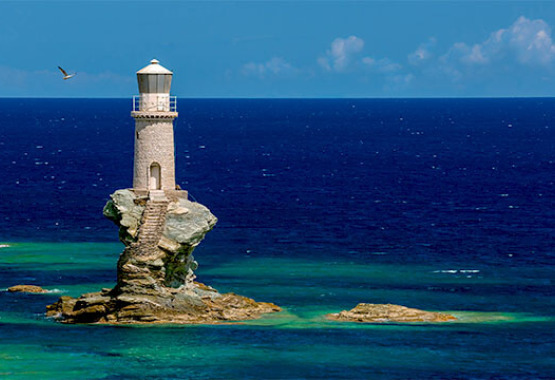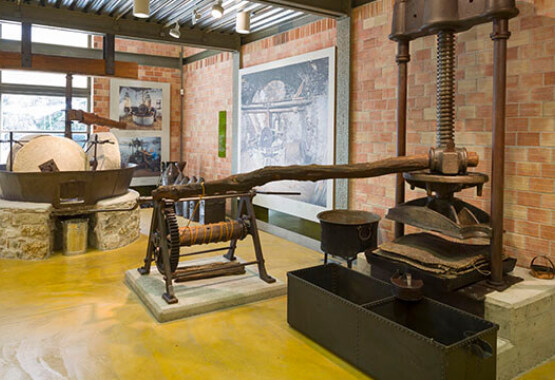Religious Museums in Greece
Lighthouses of spirituality
The character of our country, as a place with significant spiritual and religious tradition, attracts thousands of people from around the world who come here to admire religious monuments or to satisfy their spiritual pursuits.
Religious travelogue
In Serres, a visit to the Ecclesiastical Relics Repository ‘Soul Akos’ is indeed healing of the soul, as its name implies (Akos = cure, treatment). Founded in 2008 on the initiative of the Bishop of Serres and Nigrita Theologos, it is a center of special cultural value to the local society. Walking through the church, one can admire relics in four different halls (exhibiting pictures, wood carvings, embroidery and utensils respectively) from the monasteries and temples in the area, dating from the 14th to the beginning of the 20th century. The region also has a significant hagiographic tradition, with workshops operating in the Nigrita area.
The monastic tradition in Greece, has contributed to the creation of another religious museum. The Ecclesiastical Museum of Lakereia, in the village of ‘Anatoli’, owes its presence to the "Mount of Cells", which took its name from the multiple cells, hermitages and Byzantine monasteries located throughout the region and where monasticism developed from the 9th to the 14th century. Today, only the female monastery of John the Baptist, part of which dates back from 1100, still functions.
The Cultural Association ‘Anatolites’ gathered sacred objects and valuable icons that survived all this activity and thus the museum was created. Today its premises host Venetian gospels dating from 1600, single icons and triptychs from the 17th century, wooden temples, sacred vessels, and rare historical valuable sacred manuscripts. Its collection can be admired on the website of the Prefecture of Larissa, where a series of digitized museum exhibits are displayed.
At ‘Agia’ you will find the Ecclesiastical Collection of “Agion Antonion’, including gospels, 17th century images, carved wooden temples, sacred vessels, and valuable rare historical holy gospels from the 16th century (Venice).
On Syros, an exhibit was added to the Ecclesiastical Museum exhibiting Cycladic folklore items, which coexist with wondrous religious artifacts: sacred icons of the 17th and 18th century, sacerdotal and priestly vestments, liturgical vessels, amulets and sacerdotal rods, embroidery and woodwork items. On Symi similarly, the Metropolis has named its website the Ecclesiastical Museum of the Holy Monastery of ‘Panormiti’ folk-religious. The Folklore Museum includes agricultural tools, weights and measures from the 19th century, a collection of antiquities found underwater, an "old wine cellar", a traditional Symi living room with a bedroom and an area where women plied the old loom. The exhibits of religious character are even more significant, with the most important exhibit being the huge embroidered epitaph, created in Russia in 1852 on royal purple velvet and framed with the hymn "Pious Joseph,” which is also gold embroidered. The epitaph was donated by the then Russian Consul General in Istanbul, Zacharias Zacharov to the Abbot Ierotheos Fotiadis, who was also the Consul son’s teacher.
The Church is proud of its national struggles and so the establishment of a museum, such as the “Iakovos Tsounis Museum” in downtown Aigio is an example. Religious and historical relics of religious, ethnic and historical value from the collection of Second World War veteran Iakovos Tsounis coexist in the museum. Prominent among the exhibits is the carved wooden portion of the loft of the church of ‘Agia Sofia’ in Constantinople, the stole of St. Chrysostom National Martyr of Smyrna and a number of weapons owned by local revolutionaries of 1821.
Speaking of national struggles, we could not omit a reference to the Toplu Monastery on Crete, the focus of national struggles against the Turks and the period of Nazi occupation. Here, you can also find two museum collections: A collection of heirlooms and icons dating from the 15th to the 19th century. These are mainly Byzantine and post-Byzantine icons, vestments, priestly books, manuscripts and incunabula (among them, the first edition of the Souidas Dictionary of 1499) and various other religious objects.
The ‘Catholicon’ houses icons such as the enthroned Christ from the 15th century, possibly by Andreas Ritsos, the “Immaculate Virgin” from the 15th century and the famous icon of the great Blessing of Epiphany titled "Great art Thou, Lord" (a 1770 work of painter Ioannis Cornaros with 61 separate images from the Creation to the time of Jesus).
Also around 100 engravings, lithographs and woodcuts, donated by Professor Theoharis Provatakis are kept in the monastery, mainly illustrations of the monasteries of Mount Athos and Palestine, which date from the 17th, 18th and 19th century. The monastery also safeguards patriarchal documents (including some by Ecumenical Patriarch Grigorios V), a banner of the Cretan Revolution of 1866 and many more.
We choose the Cyclades as our last stop to end our tour on ecclesiastical museums and to be more precise the island of Paros and Naxos. In the southwestern corner of the complex cells of ‘Panagia Ekatontapyliani’ the Byzantine Museum of Paronaxia Metropolis is housed which has been in operation since 1930 regularly showing guests its outstanding relics: images of temples and monasteries of Paros and Asia Minor, from Rhodes, Macedonia and Romania. It also houses works of painters of the Cretan School of the 15th and 16th century and the Epitaphios of Ekatontapyliani (an excellent example of post-Byzantine ecclesiastical woodwork).




